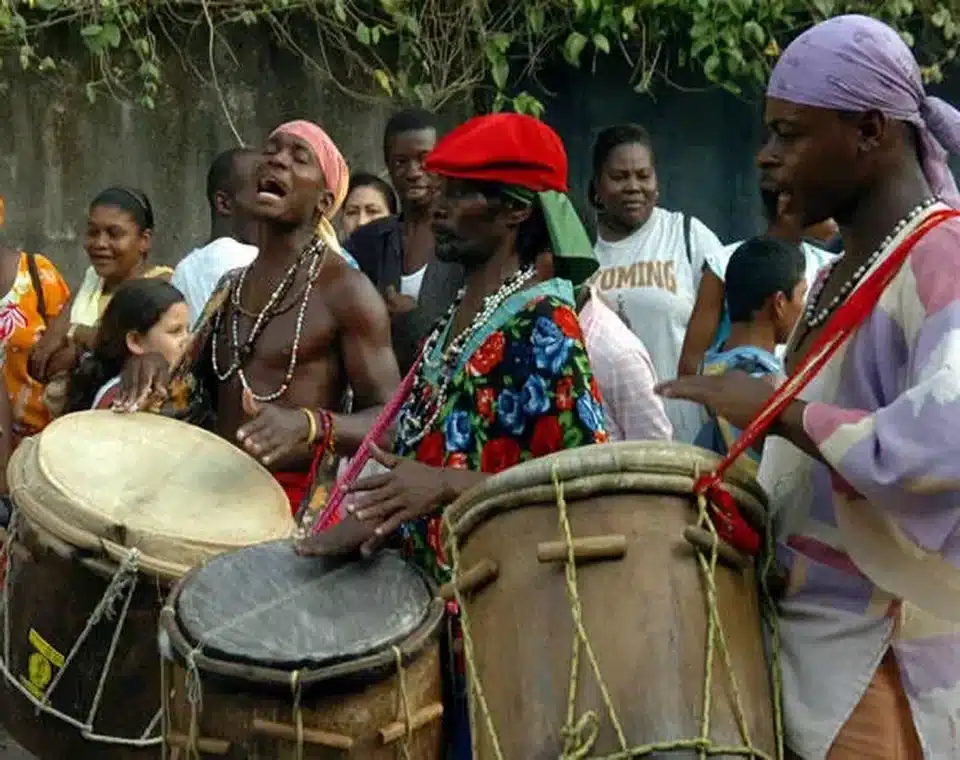St. Vincent
Garifuna in St. Vincent
The Garifuna are a fascinating and unique cultural group who are descended from a mixture of Carib, African, and Arawak peoples. These individuals are the product of intermarriage between Western and Central African slaves who escaped from colonial slavery on neighboring islands and the indigenous Amerindian inhabitants of the Caribbean islands. They were eventually given the name “Black Caribs” or Garifuna, and the group grew so large that they surpassed the populations of the Amerindians and “Yellow Caribs,” leading to conflicts with British colonists who occupied St. Vincent. Despite this tumultuous history, the Garifuna people have persevered and maintained their unique cultural identity, which includes a rich history of music, dance, and other artistic traditions. By learning about the Garifuna, we can gain a greater understanding of the diverse cultures of the Caribbean and the rich tapestry of human experience around the world.. Vincent.


In recent years, there has been a resurgence of interest in the history and culture of the Garifuna people, an ethnic group with a deep connection to the islands of St. Vincent and the Grenadines. Their fascinating story dates back to the late 18th century, when the British exiled 5,000 Black Garifuna to the island of Roatan, close to Honduras, while allowing the Yellow Caribs to remain. Despite this forced relocation, the Garifuna have maintained a strong connection to their ancestral land and have settled in Central America, with thousands of people traveling back to St. Vincent each year to celebrate their cultural legacy.
Today, Garifuna language blends Arawak, English, Spanish, French and west African languages. ‘Garifuna’ describes the culture and language, but use the word ‘Garinagu” to describe the people as a whole. Music, singing, drumming and dancing are integral parts of Garifuna culture. Many of the songs and dances tell stories about Garifuna history and culture.
The Garifuna Heritage Foundation on St. Vincent is doing important work to keep the Garifuna language and heritage alive, through festivals and educational resources. Visitors to the island can also explore the National Trust Museum in the Carnegie Building in Kingstown, which features exhibits highlighting the Garifuna culture, music, dance, food, art, spiritual heritage, and history. The old barracks inside St. Vincent’s Fort Charlotte also display beautiful paintings sharing the stories of the Garifuna people.
It’s worth noting that the importance of the Garifuna culture is being acknowledged and celebrated around the world. UNESCO declared the Garifuna language, dance, and music a Masterpiece of the Oral and Intangible Heritage of Humanity in 2001, cementing its status as a valuable and irreplaceable part of the world’s cultural heritage.
